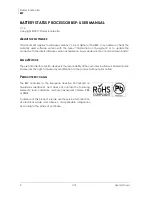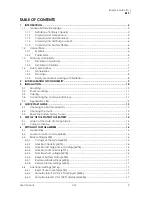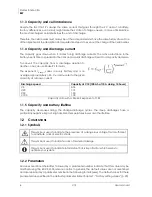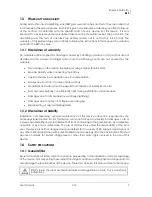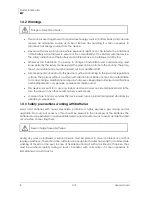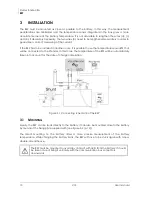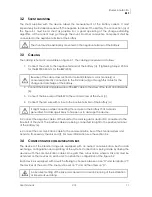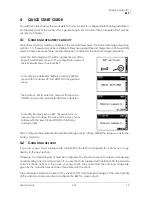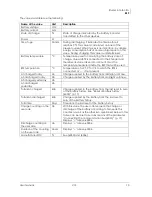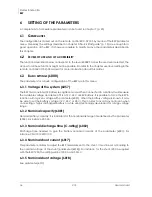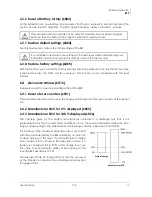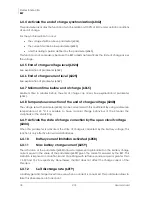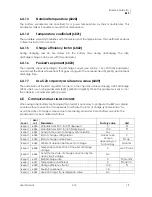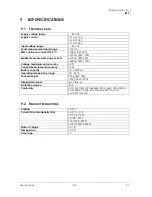
Studer Innotec SA
BSP
User manual
V1.3
11
3.2
S
HUNT MOUNTING
The shunt supplied with the device allows the measurement of the battery current. It must
imperatively be installed in series with the negative terminal of the battery. The connection (a) of
the figure 3.1 must be as short as possible. For a good operating of the charge estimating
algorithm, all the current must go through the shunt. No other conductive component shall be
connected to the negative terminal of the battery.
3.3
C
ABLING
The cabling schematic is available on figure 3.1. The cabling procedure is as follows:
1.
Connect the shunt to the negative terminal of the battery (a). (Tightening torque: 20 Nm
for the BSP500, 45 Nm for the BSP1200).
2.
Connect the black and yellow wires of the BSP cable to the screw of the shunt on battery side
(b).
3.
Connect the blue wire of the BSP to the second screw of the shunt (c).
4.
Connect the red wire with a fuse to the positive terminal of the battery (d).
It might happen while connecting the red wire to the battery that a spark is
generated. No damage is likely to happen or to damage the device.
5. Connect the negative cables of the inverter, the solar regulator and/or DC consumers to the
free bolt of the shunt. The positive cables are being connected straight to the positive terminal
of the battery (e).
6. Connect the communication cable to the communication bus of the Xtender system and
activate, if necessary, the link end (f). For more information, see the section 3.4.
3.4
C
ONNECTING THE COMMUNICATION BUS
The devices of the Xtender range are equipped with an owned communication bus for data
exchange, configuration and updating of the system. Connection is being made by linking the
devices with the communication cables. One gets then a bus online where a link end must be
activated on the devices on each end, to obtain the configuration of the figure 3.2
Each device is equipped with a switch offering to choose between open "O" and terminated "T".
The devices at the end of the line must be set on "T" and all the others on "O".
An incorrect setting of the link ends can lead to an erratic running of the installation
or impede its updating.
The shunt must be exclusively mounted on the negative terminal of the battery.
Beware of the cable cross section! All current (X solar module(s) or
consumer(s) directly connected to the DC side) will go through this cable for the
charge and discharge of the battery.


